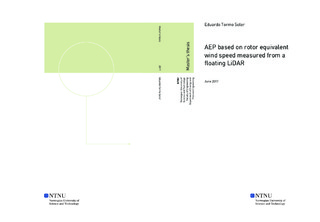| dc.description.abstract | During the last years, the wind turbines rotor area and the hub height
have been increasing gradually. This has entailed new challenges for the measuring
atmospheric boundary layer techniques which must be able to measure wind speeds over
200m height and also the use of the hub height wind speed for estimating the rotor power
has been questioned. In this study, three boundary layer estimation methods have been
compared with wind data from a floating LIDAR buoy, in order to analyze their behaviour
and their reliability. Subsequently, the REWS theory for the energy estimation has been
tested against the hub height wind speed in order to determine the power production
difference. From the three boundary layer estimation methods studied, the logarithm law
and the power law get excellent results when they were compared to long term average
LIDAR measurements are estimated, obtaining MSE of 0:0031 and 0:0087 respectively.
However the results from 10-minute average boundary layer were very inaccurate with
maximum MSE of 19. On the other hand, the energy estimation results show that the
use of hub height wind speed overestimates the wind turbine power production around
0.2% for LL and PL and, 0.4% when LIDAR measurements are used. Thus, it can be
concluded that REWS method implementation does not imply big changes on AEP. | |

